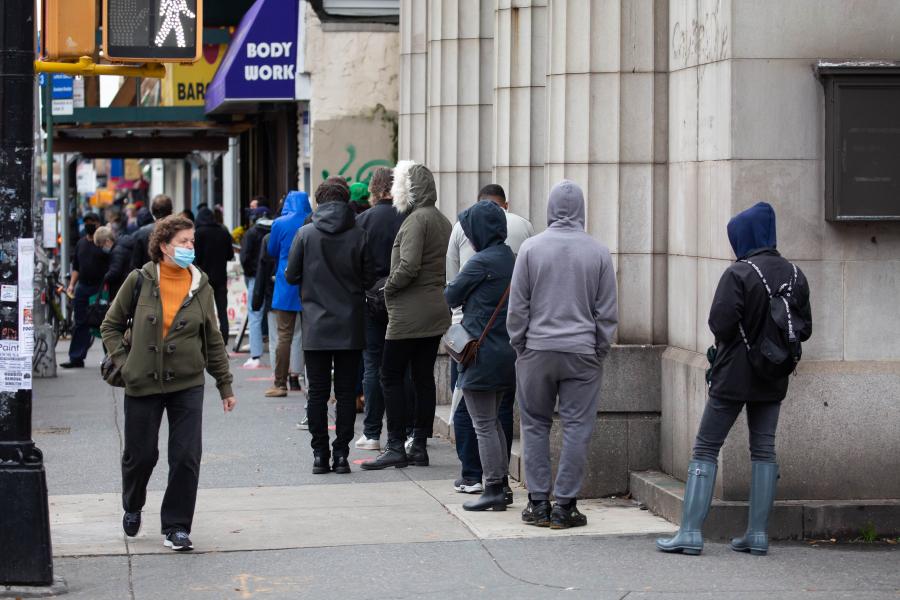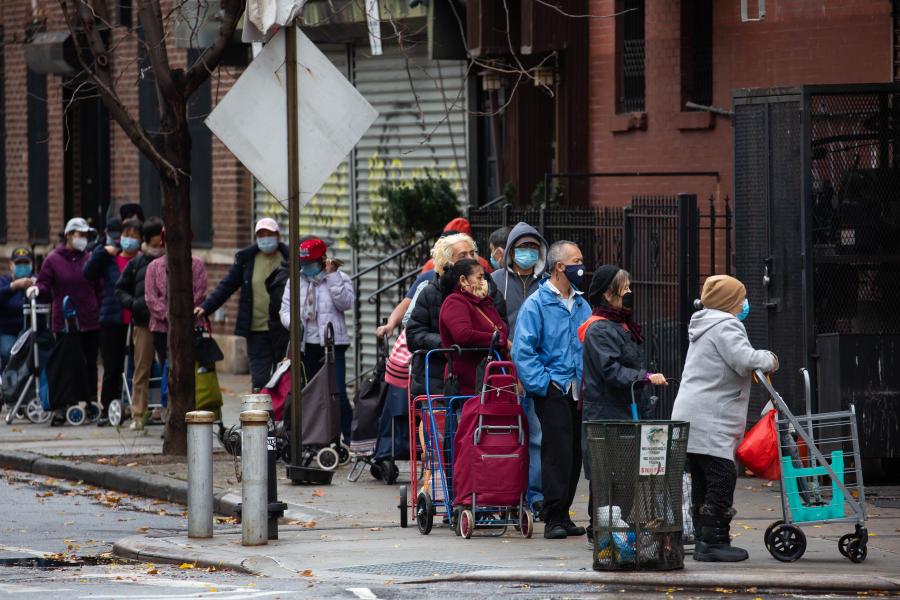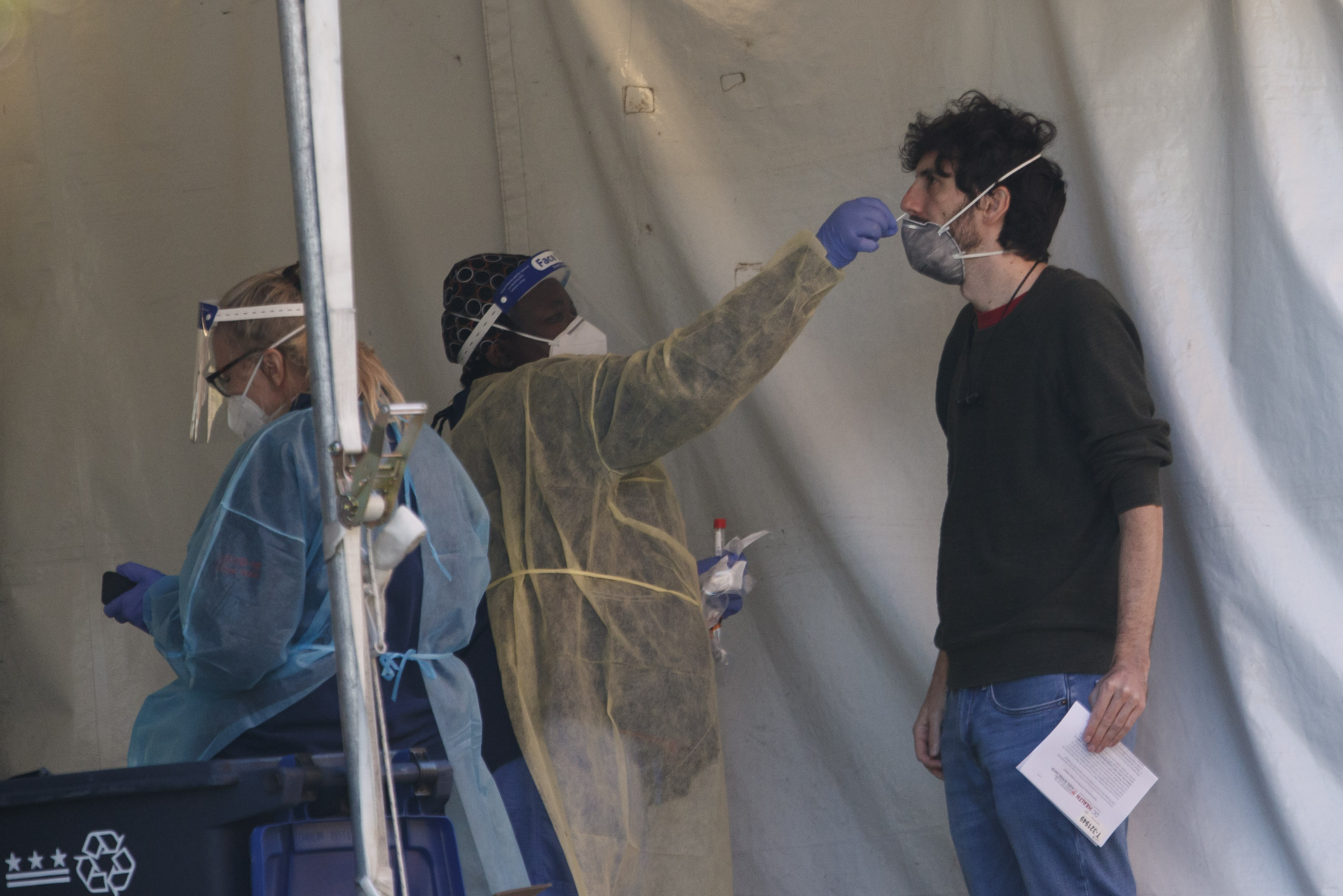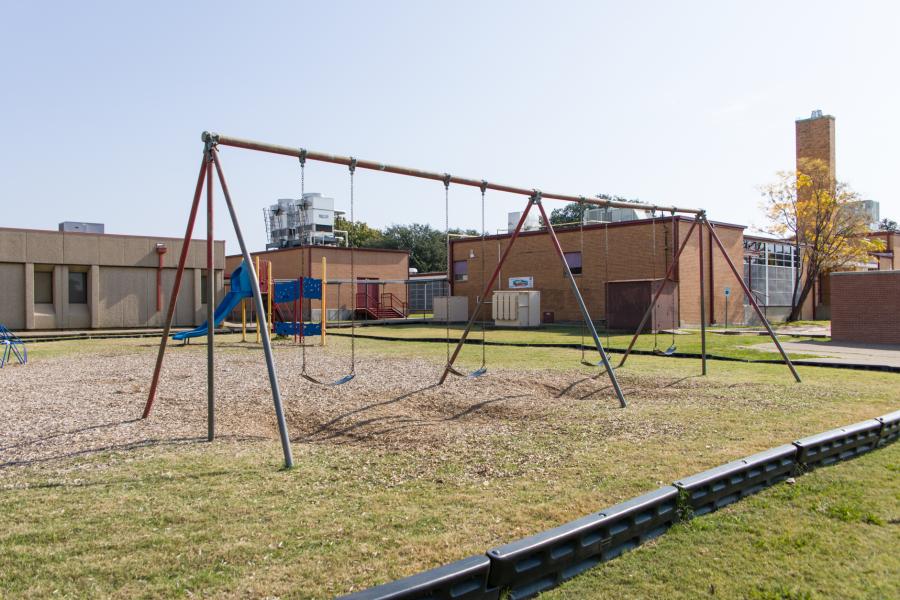-The country reported an all-time high of nearly 200,000 new COVID-19 cases Thursday, setting a new record for the fifth time in a week.
-"I think that we are in the worst part, but it will stay at this level for several weeks."
-Many states and cities are set to adopt new measures, some not seen since spring, to curb the spread.
WASHINGTON, Nov. 13 (Xinhua) -- Mask up this Thanksgiving even when you feast with a few people at home, U.S. top infectious disease expert Anthony Fauci urged on Friday, as the country has seen daily new COVID-19 cases of over 100,000 for days.
"Nothing is going to be perfect in this, but if you are indoors and gathering with people, even with a relatively small group, to the extent possible, keep the mask on even if you are indoors," said Dr. Fauci, director of the U.S. National Institute of Allergy and Infectious Diseases in an interview on "CBS This Morning."
Fauci's safe holiday recommendations for Americans came as U.S. state and city governments are rushing to adopt new restrictions against COVID-19, which is spreading across the country at record levels on a daily basis.
"IN THE WORST PART"
The United States has recorded over 10.7 million cases with more than 244,000 deaths as of 5:26 p.m. (2226 GMT) on Friday, showed a tally by Johns Hopkins University.

People wait in line for COVID-19 testing in the Brooklyn borough of New York, the United States, Nov. 12, 2020. (Photo by Michael Nagle/Xinhua)
California Friday became the country's second state to surpass 1 million COVID-19 cases since the start of the pandemic, closely following Texas, which hit the grim milestone earlier this week.
"California just surpassed a sobering threshold -- 1 million COVID-19 cases -- with no signs of the virus slowing down," said California Governor Gavin Newsom in a statement. "Increased cases are adding pressure on our hospital systems and threatening the lives of seniors, essential workers and vulnerable Californians."
The country reported an all-time high of nearly 200,000 new COVID-19 cases Thursday, setting a new record for the fifth time in a week, according to data updated Friday by the U.S. Centers for Disease Control and Prevention (CDC).
The latest daily case count of 194,610 refreshed the previous nationwide record of 143,408 set on the previous day, pushing the seven-day average daily increase to a record high of 132,442 cases, the CDC said.
At least 25 states and D.C. on Friday reported that their seven-day average of new cases was up 30 percent from the previous day, according to The Washington Post.
Every state reported an increase in new cases, with at least 10 states tallying all-time highs, including Midwestern states Illinois, Iowa, Kansas and Ohio, where the surges have pushed hospital capacity to dangerous levels, said the newspaper.
New York, the initial coronavirus epicenter in the U.S. months earlier, has averaged more than 5,000 new cases in the last three days, a figure not seen since April.

People line up outside a food pantry in Brooklyn, New York, United States, Nov. 12, 2020. (Photo by Michael Nagle/Xinhua)
"We are in the midst of a sea of COVID rising around us ... You cannot defy reality -- and reality is the virus transmits and the virus is mobile and we are in the holiday season. These are all elements that conspire to increase COVID. The numbers are going up. The numbers will go up. I take that as a fact," said New York Governor Andrew Cuomo on Friday.
Cuomo and his counterparts from six surrounding states, along with medical experts, will hold an emergency summit meeting this weekend to align COVID-19 policies as much as possible.
As of Friday, the COVID-19 infection rate on seven-day average in New York City (NYC) climbed to 2.83 percent, the highest since June 8, data showed.
"That number has gotten quite close," tweeted NYC Mayor Bill de Blasio on Friday, who has warned that schools would shut down if the citywide rolling rate of positivity tops 3 percent.
Parents and students should prepare for all-remote learning as early as Monday, de Blasio said on Friday.
"People should get ready, this is not something any parent wants to deal with. We should get ready. And parents should have a plan for the rest of the month of November, that's a safe way to think about it," he said.
With 875,401 new cases -- that is one in 378 Americans tested positive for COVID-19 this week -- according to the weekly update of the COVID Tracking Project, confirmed cases are up 41 percent across the country, hospitalizations up 20 percent, and deaths up 23 percent.
"I think that we are in the worst part, but it will stay at this level for

A health worker takes a COVID-19 PCR nasal swab sample from a man at a COVID-19 testing site in Washington, D.C., the United States, Nov. 13, 2020. (Photo by Ting Shen/Xinhua)
several weeks," said Stanley Perlman, professor of microbiology and immunology at the University of Iowa, in an interview with Xinhua.
Perlman said major factors resulting in the recent surge include more indoor activities and COVID-19 fatigue.
"A large part of the population do not believe that COVID-19 is real, even as they die from it," he noted.
RESTRICTIONS NOT SEEN SINCE SPRING
With potential vaccines months away from widespread distribution, health experts have warned the United States may see further acceleration of COVID-19 cases as cooler months and holiday seasons ahead would drive more people indoors and help the virus spread.
Perlman urged more mitigation efforts in order to bring the surge under control, including mask wearing, careful social distancing, partial lockdowns, and better contact tracing once the numbers are decreased.
"When the pandemic is as bad as it is now, it is hard to bring numbers down without drastic measures," he noted.
Many states and cities are set to adopt new measures, some not seen since spring, to curb the spread.
Virginia Governor Ralph Northam on Friday announced new restrictions on public and private gatherings, an expanded mask mandate, strengthened enforcement at retail businesses, and an alcohol curfew. These restrictions will take effect at midnight on Monday.
"While our cases may not be rising as rapidly as some states, I do not intend to wait until they are," Northam said. "We are acting now so things do not get worse."

Photo taken on Nov. 13, 2020 shows the empty playground of F.P. Caillet Elementary school in Dallas, Texas, the United States. (Photo by Dan Tian/Xinhua)
Oregon Governor Kate Brown on Friday announced a two-week long "freeze" that will close certain businesses and dramatically reduce capacity of indoor spaces.
The statewide "freeze," to be effective next Wednesday and run through Dec. 2, is seen as the most extensive set of restrictions since Brown's stay-home order in March.
The announcement came on the same day Brown and fellow West Coast governors in California and Washington issued a joint travel advisory, warning that anyone arriving from out of state should quarantine for two weeks.
New Mexico Governor Michelle Lujan Grisham announced a statewide shelter-in-place order starting Monday for two weeks, including the Thanksgiving holiday weekend.
"We face a life or death situation," Grisham said at a Friday news conference where she indicated that people should stay home, avoid social contact and abide by the state's mask mandate if they do need to go out for essentials.
Vermont Governor Phil Scott Friday implemented strict new guidelines for social gatherings, bars and restaurants, as well as sports leagues. Starting Friday, multi-household gatherings are prohibited -- both inside and outside. All non-school sports leagues are on pause.
"We're definitely moving in the wrong direction," Scott said at a media briefing. "We're in a new phase of this pandemic. The days of very low risk are over." (Video editor: Hong Ling.)



